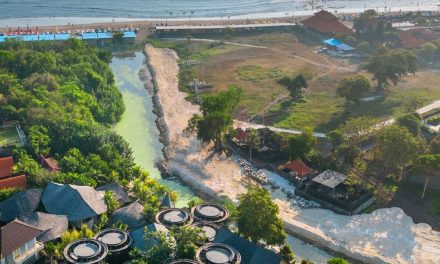Bali, the Island of the Gods, is renowned for its stunning beaches, vibrant culture, and lush landscapes. But beneath the surface of its bustling tourist hotspots lies a treasure trove of eco-tourism activities that offer not just adventure, but a chance to connect with nature and contribute to conservation efforts. If you’re wondering when to embark on a sustainable journey through this tropical paradise, you’re in the right place! Let’s dive into the best time to visit Bali for eco-tourism activities, sprinkled with personal anecdotes and practical advice.
Understanding Bali’s Seasons
Before we explore the best time for eco-tourism, it’s crucial to understand Bali’s climate. The island primarily experiences two seasons: the dry season (April to October) and the rainy season (November to March).
– Dry Season (April to October): This is characterized by sunny days, lower humidity, and pleasant temperatures. Perfect for outdoor activities!
– Rainy Season (November to March): Though it can be wetter, this season offers fewer tourists and lush landscapes. Eco-activities can still thrive, especially those focused on conservation.
For my trip in June last year, I was greeted with sunny weather that made hiking the rice terraces breathtaking. The vibrant green against the clear blue sky was a sight to behold!
The Dry Season: Peak for Eco-Adventures
Ideal for Hiking and Outdoor Activities
If you’re like me and love trekking through stunning landscapes, the dry season is ideal. This is when I embarked on a hike up Mount Batur to catch the sun rising over the volcanic silhouette. The experience was invigorating, and so was the view!
Tip: Start your hike early! You’ll want to leave before the sun rises, which means waking up around 2 AM. But trust me, the reward of watching the dawn break over Bali is well worth it.
Snorkeling and Diving
During the dry season, the visibility underwater is spectacular. Take a trip to Amed or the Gili Islands for some phenomenal snorkeling and diving experiences. I remember swimming alongside vibrant coral reefs and witnessing the astonishing marine life – a true reminder of the importance of ocean conservation.
Practical Advice: Go early in the morning to avoid crowds and experience the underwater beauty in peace. Always choose eco-friendly dive shops that practice sustainable tourism.
Rainy Season: A Hidden Gem for Eco-Tourism
While many shy away from visiting during the rainy season, this time can offer unique eco-tourism experiences that are truly special.
Lush Greenery and Fewer Tourists
If you venture out in December, when the rains are light, the scenery becomes breathtakingly lush. I decided to visit Ubud, where I took part in a rice planting activity with local farmers. The joy of getting my hands muddy while learning about sustainable farming practices was both humbling and enlightening.
Scenario: Imagine spending a day in the fields, surrounded by emerald green rice paddies, the sound of nature all around you – it’s a serene escape from the usual beach scene.
Eco-Lodges and Sustainable Resorts
In the rainy season, many eco-lodges offer discounts, making your stay both budget-friendly and environmentally friendly. I stayed at a sustainable resort in the jungle that was powered entirely by solar energy. After a day of exploring, I’d unwind on my balcony, listening to the rain patter on the leaves.
Engage in Wildlife Conservation
This is also a prime time to participate in wildlife conservation tours, especially if you’re keen on seeing the majestic sea turtles. Some tour operators organize turtle egg releases from November through early March. It was an unforgettable experience watching tiny turtles scurry towards the ocean for the first time, knowing that I played a small part in supporting their survival.
Combining Eco-Tourism with Cultural Experiences
Whenever you visit, remember that Bali is rich in culture. Look for opportunities to participate in local ceremonies or workshops, such as traditional Balinese painting or craft-making from natural materials. This combination of eco-tourism and culture allowed me to interact with locals in a way that felt genuine.Final Thoughts: Timing Your VisitWhile the dry season is undeniably popular and perfect for many eco-tourism adventures, the rainy season has its own charm, with fewer crowds and unique experiences. Ultimately, your best time to visit Bali for eco-tourism activities depends on what you want to experience.- Best for Hiking & Diving: April to October- Best for Cultural and Unique Eco-Experiences: November to MarchNo matter when you go, the spirit of Bali’s natural beauty and commitment to sustainability will surely captivate you. So pack your bags, embrace the adventure, and immerse yourself in eco-friendly experiences that will leave lasting memories. Happy travels!






